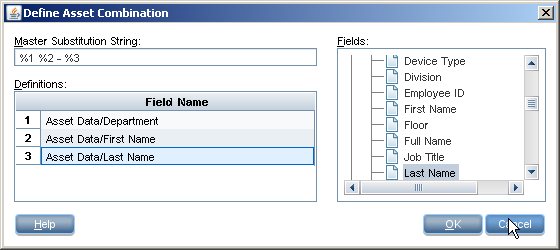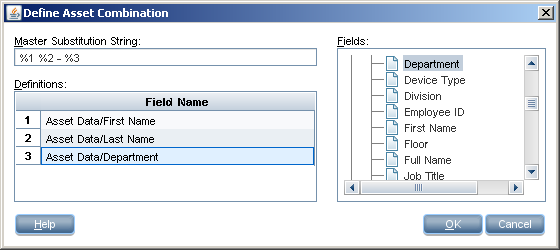Searching the Help
To search for information in the Help, type a word or phrase in the Search box. When you enter a group of words, OR is inferred. You can use Boolean operators to refine your search.
Results returned are case insensitive. However, results ranking takes case into account and assigns higher scores to case matches. Therefore, a search for "cats" followed by a search for "Cats" would return the same number of Help topics, but the order in which the topics are listed would be different.
| Search for | Example | Results |
|---|---|---|
| A single word | cat
|
Topics that contain the word "cat". You will also find its grammatical variations, such as "cats". |
|
A phrase. You can specify that the search results contain a specific phrase. |
"cat food" (quotation marks) |
Topics that contain the literal phrase "cat food" and all its grammatical variations. Without the quotation marks, the query is equivalent to specifying an OR operator, which finds topics with one of the individual words instead of the phrase. |
| Search for | Operator | Example |
|---|---|---|
|
Two or more words in the same topic |
|
|
| Either word in a topic |
|
|
| Topics that do not contain a specific word or phrase |
|
|
| Topics that contain one string and do not contain another | ^ (caret) |
cat ^ mouse
|
| A combination of search types | ( ) parentheses |
|
- Inventory Discovery
- Inventory Discovery Overview
- Inventory Discovery Scanners
- Inventory Discovery Deployment Overview
- Scan Files
- Processing Scan Files
- Scan File Processing Power
- XML Enricher
- XML Enricher Log Files
- Application Teaching
- Using Rules to Teach Applications
- Enriched Scan File Structure
- Hardware and Software Recognition
- App Store Applications
- Custom Hardware or Asset Mapping
- Inventory Tools
- BDNA Normalize Integration
- Discovery Options for Client IP Ranges
- How to Run Inventory Discovery
- How to Run Inventory Discovery Manually
- How to View Discovery Status of an Inventory CI in JMX
- How to View Agent Deployment Log for an Inventory CI in JMX
- How to Edit Pre and Post Scan Scripts
- How to Set Up Asset Fields for Data Collection
- How to Set Up Asset Fields for Data Collection - Example
- How to Set up the Scanner to Handle Delta Scan Files in Manual Deployment Mode
- How to Configure XML Enricher to Suit the Probe Deployment Mode
- How to Configure the Maximum Number of Threads to Process Scan Files
- How to Create the Processed Core Directory
- How to Check XML Enricher Health Using JMX
- How to Reprocess Scan Files
- How to Import SAIs to the Data Flow Probe
- How to Import Normalization Rules to the Data Flow Probe
- How to Configure and Optimize Inventory Discovery
- How to Configure Analysis Asset Fields
- How to Map Scan File Attributes to UCMDB
- Mapping Hardware or Asset Fields to UCMDB - Use-Case Scenario
- How to Set Extract Options
- How to Filter Discovery Results to UCMDB
- How to Enable Application Virtualization Discovery
- How to Rename Scanner Executable Files
- How to Integrate BDNA Normalize
- How to Discover Client IP Ranges Without SNMP
- How to Discover Windows Device Drivers using the Inventory Discovery by Scanner Job
- Scanner Command Line Parameters Overview
- Scanner Command Line Parameters
- Scanner Information Type Parameters
- Scanner File Locations
- Web Server Configuration for Saving Scan Files via HTTP
- XML Enricher Directory Structure
- Enriched XSF File Structure
- Inventory Discovery User Interface
Set Up Asset Fields for Data Collection - Example
This example describes how to set up a Combination type asset field.
Combination fields can combine up to five asset or hardware fields into a single field. This is particularly useful for the Description field.
In this example, the field combines the first and last names of an employee, and the department he works for, into one field, with the following format
<First name> <Last Name> - <Department>
-
In the Scanner Generator wizard, go to the Asset Data page > Asset Data tab.
-
Select Description, and click Edit Field
 .
. -
Configure the asset field as described in Asset Field Configuration Dialog Box.
-
In the Caption field, type Employee.
-
Select a field data type: Under Derived Fields, select Combination Field.
-
Next to the Parameter box, click Change to define parameters for the combination field.
-
-
Build the master substitution string to yield the desired format. In the Master Substitution String field, enter
%1 %2 - %3
-
Select the asset fields that you want to appear in the resulting field.
In the Fields tree:
-
Under Asset Data, double-click Department.
-
Under Asset Data, double-click First Name.
-
Under Asset Data, double-click Last Name.

-
-
To display Department after the name, in the Definitions grid, drag Department down to the third place in the list.

The numbers in the Definitions grid correspond to the numbers in the Master Substitution String field. So:
-
%1 will be replaced with First Name (#1 in the grid)
-
%2 will be replaced with Last Name (#2 in the grid)
-
%3 will be replaced with Department (#3 in the grid)
-
Result
If the first name is John, the last name is Doe, and the department he works in is Research and Development, the resulting combination field string will be:
John Doe - Research and Development
We welcome your comments!
To open the configured email client on this computer, open an email window.
Otherwise, copy the information below to a web mail client, and send this email to ovdoc-asm@hpe.com.
Help Topic ID:
Product:
Topic Title:
Feedback:





